Kiwi-Pasifika lady poets

Talofa lava.
Pasifika (migrants and their descendants originating from Pacific island groups such as Fiji, Sāmoa, Tonga as just some examples) poets in Aotearoa-New Zealand are increasingly audible and visible, which is a reflection of a rapid Pasifika population increase in the country; indeed the percentage of Pasifika youth under the age of 25, at 60% of overall Pasifika population, is the highest in the country. More, Pasifika poets are standing up to be counted, proudly proclaiming their Pacific islands heritage in a country, Aotearoa-New Zealand, which ironically does not seem to ever equate itself as a Pacific island, which of course it is, as Leilani Tamu points out later.
This is all — of course — excellent, for it means some ‘divergent’ voices are being heard and seen to be heard, as Pasifika poetry is beautiful when performed — the oral poetry-song tradition is as important as it is for Māori, themselves Pasifika of course.
But, do these ‘divergent’ voices get given a fair go, even nowadays? Or is that flattening, batten-down-the-hatches (primarily Pākehā; English-language; with a generally middle-class topos; language games-based; afraid-to-emotionalise) Aotearoa poetic still by far the dominant?
In this commentary post, I asked several Pasifika lady poets what they think about whether they would call themselves Kiwi-Pasifika and whether they then incorporate specifically Pasifika subject matter, language, enunciations in their poetry. Why ladies? Because as Selina Tusitala Marsh points out, there’s not so many Pasifika male poets...given the singular importance of writers such as David Eggleton, John Pule, Doug Poole (who will feature in a later commentary) and the originator-general, Albert Wendt. She noted the need for more Pasifika male poets, 'And more from men. I’m a mother of three sons and there is comparatively little to attract them to ‘poetry’ at this point in time.'
Let’s also see what they all think about whether the ‘normative’ Aotearoa poetic still reigns supreme - given that they do not offer consensus in any of their views, nor need to.
I will here make it clear that being Pasifika for several of these ladies incorporates a range of Pacific islands in their family backgrounds — as they have gafa (ancestry) from a variety of different Pacific locales. Yet, they all do share a common Sāmoan heritage. More, there are other Pasifika Lady Poets who will also feature in a further commentary post - I was blessed with many contributions - and I must also make mention of Sia Figiel, who has strong Aotearoa-New Zealand links.
And a quick note about the many tataus (tattoos) sighted on this site — Sāmoan women have historically also received tattoos with great cultural significance. These traditional tattoos, or malu, worn by Sāmoan women are placed on the backs of the thighs and extend down to the knees. As a sign of great tribal standing and reverence, some women also receive tattoos on their hands and arms referred to as limas. I reckon Kiwi-Pasifika Lady Poets have earned their tatau.
Finally, I highlight below certain points made by the ladies that I feel are especially significant.
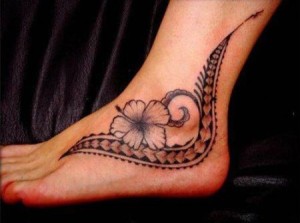
Selina Tusitala Marsh sees a definite Pasifika bonding and a concomitant empowerment, most especially in the world's largest Pasifika populated city, Auckland, 'I’m part of the Pacific diaspora. My Sāmoan mother met and married my Pākehā New Zealand father in Apia, Sāmoa. My mother then relocated to New Zealand in the mid 60s...in those days, ‘Kiwi’ automatically equated with European / Pākehā – nowadays it does not! Our population, particularly in Auckland, is so ethnically diverse, that Kiwi are now also many ‘shades of brown’. But ‘Pasifika’ is a relatively new term, and one that only makes sense in diaspora... in New Zealand, the term takes on an often useful strategic essentialism (to use Guyatri Spivak’s term) and ‘Pasifika’ pulls together people of Pasifika descent in the face of other large ethnic groups in order to represent the needs and wants of our communities. In multicultural Auckland, I’d venture to say, that Pasifika is the new ‘norm’ – or if that sounds too optimistic, at least there’s been a definite blurring in terms of margin / centre cultural politics (where Pākehā was unquestionably the centre), particularly in popular culture (this hasn’t quite filtered down to politics though).This inversion/subversion of margin/centre politics lies at the heart of my critical and creative work which seeks to ‘give voice’ to Pasifika. '
Relatedly, she notes that, 'Thematically, my poetry is by default, defined, filtered and textured by my experiences as a Pasifika woman in Aotearoa- New Zealand. This tends to result in a two-pronged approach in my critical and creative work: to expose and to explore. Critically, I work to expose more writers and their writing in Pacific Literature. Lately I now prefer to refer to this field as Indigenous, Oceanic Literacy Studies, as I feel this is more inclusive and ideologically more empowering...Decolonising our physical cartography leads to the decolonizing of an ideological map-making and meaning-making in our part of the world. This leads to the second drive in my work, to explore Oceanic texts in a way that is premised on Oceanic centredness. Chad Allen uses a ‘transindigenous’ approach in his critique of indigenous texts via indigenous art aesthetics across indigenous cultures. I like this kind of re-centring...In my own poetics I focus on things Pasifika, issues, stories, world events from a Pasifika perspective. In terms of aesthetics, my poetry is driven by oral and aural qualities. Sound, rhythm, internal rhyme is particularly important... Space on the page is important in conveying breath and gaps, pauses and silencing sounds. I often scatter Pacific language words in my lines, employing bilanguaging techniques (see Walter Mignolo’s work) that attempt to convey multiple world views on the line that point to the impossibilities of full translation.' I can concur with the poet's steady incorporation of oral textures and sense of sheer physicality in her poems, as for example in her recent collection, Dark Sparring.
She continues, 'I'd simply like to see more of Pasifika poetry in the literary scene... Poetry Slams have been important in terms of opening up access to the next generation who are already sophisticated listeners and participators in hip-hop/rap culture. But I’d also like to see more experimentation in the poetry scene, more Found Poetry, more Visual Poetry, more multimedia experimentations that open up access and create curiosity across gender and generation...With self-publication, blogs, webpages and yes, Facebook, words have increased in the public sphere more than ever – but the stamp of peer reviewed ‘authority’ that publication by a press can give is undeniable...However, ever the optimist, it still feels like Pasifika poets are in a good position (and have good motivation) to diversify their poetic outputs, both in terms of their aesthetic play and the kinds of ways they get their work into the public arena...'
Finally, here, she shares, 'My key-speak, turangawaewae (standing place) poem, written in 1994. It is as relevant today as it was then when I was a student... This is the poem I use to identify who I am, what I do, and why.' [Selina Tusitala Marsh photo below]
Tusitala
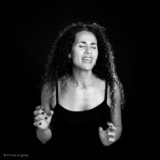
Teller of tales
That I never heard
Till yesterday
Born away
For another life
Today
The tale I tell
Is theirs and yours
A way of seeking some more
Of Sāmoa
Of my sacred centre
Today
The tale I tell
Will book its way 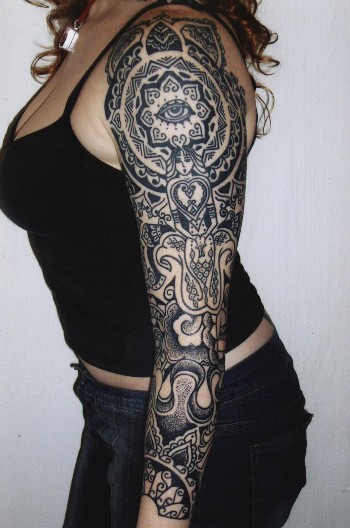
Through tongued histories
Sanctioned mysteries
Spaces of silence
Timeless lives
Tala tusi
Tell the book
Word the spirit of brown
In theory
In creativity
We make our sound
renown
Amber Esau comments, 'I guess I would', [define myself as a Kiwi-Pasifika poet.]' It feels like when you’re not directly from the homeland you have no right to talk about it except in your absence of homeland. It feels like that’s what a Kiwi-Pasifika poet is supposed to do; weave with that absence...Polynesian images and motifs are very common throughout my work. I use some Sāmoan and Māori words in my writing. There is something really nice about transcribing the bilingual mind. Some words are untranslatable or they only affect us as a non-English word or they have different connotations in the original tongue and for me it’s about reconnecting my writing with something more than I have ever been...Sāmoan culture is a very communal culture and using the language to heighten a poem written predominantly in English feels like carrying your entire ancestry with you.Sāmoan is also my language of home...the hybrid sentence is a very familiar thing for me. It is almost a linguistic identifier of myself...I enjoy writing and performing spoken word as well and I see a lot of our emerging Pasifika youth becoming really interested in it. Coming from an oral tradition it is an important progression...The more I write something out as a Sāmoan, the more I realise how much it resonates with me being a kiwi. A lot of my earlier work was Identity bound. (I suppose all poetry is). At the moment I deal with more universal themes while filtering them through my Sāmoan/Māori perspective. It is more encompassing of who I am as a person and writer.'
Amber goes on to state, 'We’re lucky to be a part of a literary tradition that has a lot of strong Polynesian women. The first Sāmoan female poet I was introduced to was Tusiata Avia and she has remained one of my literary heroes. What I would like to see is a vaster scope of topics and themes sifted through the Sāmoan female experience. Random things like Mathematics and Biology and narratives of Polynesian women navigating these spaces. [Amber Esau photo below at right.]
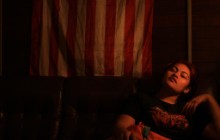
Mariana Isara [photo below] adds, 'I wouldn’t have called myself a ‘Pasifika poet’ when my first poem was published ten years ago. Tusiata Avia’s and Karlo Mila’s debut poetry collections had just been released, but I was unaware of them. The Pasifika poetry niche was not yet well carved out in Aotearoa. When my creative writing manuscript was examined in 2007 my poetry was described as working in ‘related territory to Avia and Mila’; and my attempt to mashup two ancient texts of Mediterranean origin was dubbed an ‘afakasi collage’...Overtime I came to realise that, like my brown body, my poetry will be read as other/Pasifika in the colonised context of Aotearoa. This othering isn’t something I can opt out of...I’ve felt pressure to conform to an idea of being a Pasifika poet. This pressure (real/and/or/imagined) sometimes influenced the work I’ve submitted for publication.'
As for conscious incorporation of Pasifika themes and stylistic devices, Mariana adds, 'In many ways I’m culturally illiterate. I was raised by my palagi (NZ European) mother, and never acculturated into fa’a Sāmoa (Sāmoan culture), nor was Gagana Sāmoa (language) transmitted to me. This non-transmission has meant my ethnic identity has often been a source of angst and mythogenesis...These days I’ll claim Pasifika poet as one of my ‘multiple identities’; it describes a collective literary tradition I’m a part of, but it’s not thedefinitive label I’d use for my poetry...Only a handful of my poems have markedly Pasifika content. In these I’ve been drawn to writing about (un)belonging, ancestry, language acquisition, colonisation, racism, recurrent nightmares, anthropology, indigenous spirituality, dance, sexuality, memory, pacifism, trees, climate change, and silencing...Many of these themes recur in my other poems, and reflect my own curiosities... Some of the imagery I've used in these poems has drawn on childhood memories and photographs from briefly living in Savai'i, others have been inspired by vivid anthropological descriptions, essays, and traditional song lyrics...I've used anaphora in several of my Pasifika poems...on occasion I've used Gagana Sāmoa in my poetry, often because I wanted to include the sounds of specific words, or for eye rhymes. I had to look up most of the words in Sāmoan dictionaries...In the last few years I’ve scoured anthropological texts seeking stories, myths, spiritual beliefs, and indigenous Sāmoan life-ways that would resonate like a Kākāpō deep in my belly...I haven’t found this search as generative as I’d hoped. The whole process has been complicated bythe fact that these anthropological texts were recorded by colonial white men, often to: ‘preserve the cultural heritage of the slowly dying-out peoples of the Pacific in the evening of their unique culture and philosophy of life.’ (Dr Augustin Kramer.)...I would like fewer people to feel (like I did) that they need to go to University to learn to write poetry. As below. 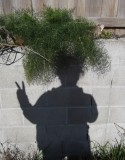
Holy
Right near the altar
my good friend fucked
her first girlfriend
in a small rural church
on the bush clad coast
miles from nowhere
Oh My God! Why?
we asked her, Because she said
smiling: It was beautiful
in there, we wanted to
celebrate
Leilani Tamu answers my first request, about Kiwi-Pasifika identification with, 'Good question. I guess it comes down to what's perceived or understood to be 'normal' in Aotearoa now. First and foremost I see myself as a writer whose work contributes to a global tide of social change that is currently underway. I write because I am committed to the principle of truthtopower - to bringing about change for the better, to tackle injustice - historical, contemporary, systemic and structural - on the nose. Having the courage and faith to be able to speak up and out is key to my practice and my Pasifika heritage is absolutely integral to that, particularly with respect to the perspective I bring to the table. I am determined to use my writing as a way of challenging norms that perpetuate inequality in this country and in the Pacific wider region...' [Accordingly] 'I would describe my creative practice...as being informed by my 'being' and therefore my Pasifika heritage...I see and translate the world around me based on the metaphors, concepts and experiences that have been woven together to create the structure of my inner being. And at the heart of that is my ancestry - and in particular my love for my grandmother, Leafaitulagi, who continues to guide and inform my journey'.
Significantly, for Leilani also, 'One of the fundamental challenges that we face in Aotearoa - not just in the arts but in all sectors - is that we continue to view 'the Pacific' as something other than the place within which we reside. Much of this can be attributed to colonial hegemonic discourse. If I was able to 'rethink' the space within which Aotearoa poetics operates, I'd start from a point where it was taken for granted that Aotearoa itself is a Pacific Island Nation (which it is, although 99% of the time you have to remind people of this) and that the creative genealogies that connect and bind us are fundamental to our identity as a society...I do think Aotearoa could benefit from creating more space for our poets - all of our poets - to speak truth to power - to give voice to silences, to say the things that no one else wants to say and to celebrate difference. And no, there definitely isn't sufficient recognition, publishing scope or critical space provided in this country for Pasifika poets, but having said that there isn't much of that provided for poets in general...the things that we have to say aren't always 'marketable' or easily 'packaged'. That's why increasingly I publish my work online and free.' She shares with us a poem -
Tuli 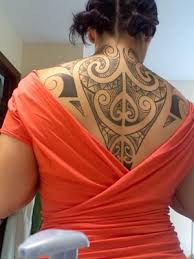
your wings, my body
delicate sinews
woven
braids
flesh bone
your eyes, my spirit
soft feathers
adorn
memories
fine ‘ie-toga 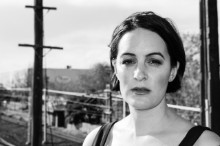
your voice, my heart
gentle trills
pierce
silent
formless breath
within you
sing me
home
[Leilani Tamu photo above right]
Serie Barford has a good deal of frankness in her contribution, as relating to her being a staunch Kiwi-Pasifika poet and to the past prejudicial practices endemic in this country (who can ever forget the notorious 'dawn raids' on supposed Polynesian overstayers?), 'Definitely...I was brought up in West Auckland in a family that had to'ona'i (a family lunch gathering) every Sunday. I didn't attend preschool and we didn't have a television in my early years so was principally 'storied' by my aiga (family). ..My grandmother storied me with Sāmoan traditional tales, narratives about village life before the missionaries arrived, and what is was like to live under both German and New Zealand colonial rule...My school teachers didn't know any Sāmoan ghost stories, couldn't spell the names of the food we ate at to'ona'i and often misunderstood or rejected my perspective on life. Quite frankly, my family's discourse was not part of the sanctioned national narrative. At primary school we had to write a story every Monday morning about, “What I did in the weekend”. One Monday I wrote a story about how my mother was an alien and had to keep her fingernails clean in case the police took her away. My teacher told me to “write a true story” but as far as I was concerned, it was true...When my mother arrived in Aotearoa in the 1950s Sāmoa was a New Zealand protectorate and she had to report to the police, give them her thumb print and apply every six months for an extension to stay in the country. Eventually she was allowed to stay indefinitely and was given a little yellow booklet to keep in her purse. I'd seen the booklet and my mother had shown me the doctors notes stating that she was healthy, polite and clean – including her fingernails. The day I rubbed out the story of my migrant mother being called an 'alien' was a watershed day for me. I stopped being open about my home life and was literally censoring my “share and tell” stories at school before I could read chapter books by myself...This feeling of living in 'the margins' carried through to university. One particular palagi tutor finalised my decision to walk away from a chance to pursue an MA'.
Serie continues, 'Many of my poems consciously explore the Sāmoan concept of 'Ia teu le va' – the idea of taking care of relationships within the Va, the space that relates us to eveyone and everything within the visible and invisible worlds...My poems are full of Pasifika imagery and most of my poems are edited by how they sound – how they come alive when they're lifted from the page and voiced. They have a straight forward narrative quality and identifiable Pasifika content. [My poem] Niu Sila Granddaughter (Tapa Talk) contains phrases such as :
the visual vocabulary of taro
boiling in stainless steel pots
tells Sina she's home
….. inside the crowded house
lilac and ecru slabs of taro
glazed with coconut cream and oni
I also find myself drawn towards aspects of colonial suppression and disrupted narratives. Plea to the Spanish Lady, the title poem of a collection published by Hard Echo Press in 1985, is about the post WW1 Spanish Influenza epidemic, and the ineptitude of New Zealand administrators who refused to quarantine sickly passengers aboard the cargo ship, Talune. Twenty two percent of Western Sāmoa's population died in the ensuring epidemic...I was heckled when I first performed this poem to a Poetry Live audience in Auckland and was accused of 'making up history' . This was against the 1980's socio-political backdrop of the Springbok tour, fall out from the 1970's dawn raids, and the controversy surrounding Naida Glavish, a telephone operator, who was demoted for greeting people with a friendly, “Kia ora”. [Serie Barford photo below]
Plea to the Spanish Lady
Impotant streets fall before you
and now Talune berthed in Apia
harbours your sway
Sway not our way Lady
Such homage grieves us
Aboard Talune the Doctor examines
bodies propped by mailbags
Colonel Logan agrees
“Yes,
a sea-sick lot this one”.
The ocean is calm
Today the Sāmoan Times is all news
death notices and a front page
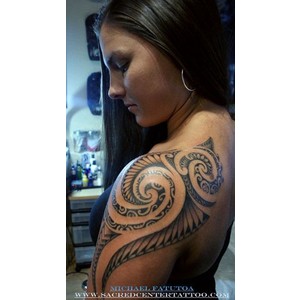
Today the editor died
Today Teuila's screams awoke me
as she lay between her parents
dipping fingers in their sweat
Her name means flower Lady
see her temble and wilt
We will bury her in lavalava
scented with frangipani
At Papauta Girls' School desks are empty
Colonel Logan shouts “I do not care if they
are going to die. Let them die and go to Hell”.
American medicine is sent back unopened.
He's never cared for us Lady
He's not my brother in Christ He can't be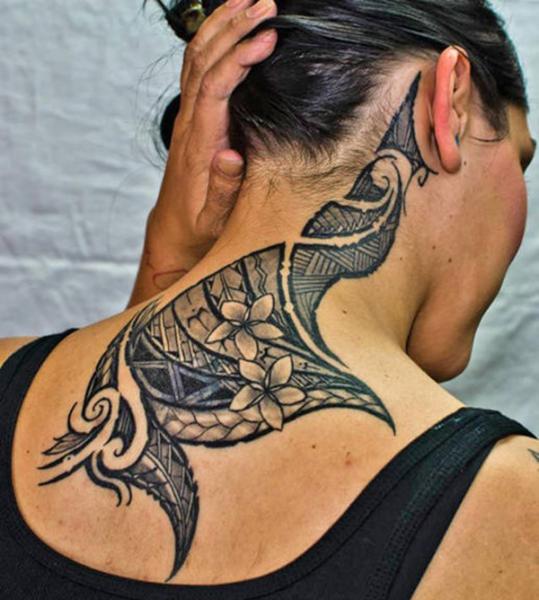
Logs tumble, tumble from his eyes
Crosses bearing corpses swim in them
My flesh is moist too moist
Who will havest the taro and breadfuit?
Who will instruct the young? Feed my children?
Don't linger Spanish Lady
The trenches are full and
my family spills into the ocean
fevered and dazed
drowning at each others' feet
Go now Lady
We have fallen before you
Serie continues, 'Pasifika poets need more champions – people who make it their business to locate, mentor, publish and critique Pasifika voices. My work sits well with editors and publishers who deliberately and even provocatively collect and display “other voice” - particularly Pasifika voice. Within this context it has companionship and relationship with other texts that express cultural points of reference and world views that differ from the Eurocentric narrative that dominates this nation's discourse – both obviously and insidiously. It's an uphill battle to taken seriously as a writer by literary gatekeepers who don't relate to what we're writing about and find pieces that shake the core of our beings, stylistically unappealing, inconsequential or unacceptably confrontational. This narrows our publishing opportunitites at a time when the publishing world is already facing major cutbacks and changes...I'd also like to see less emphasis on palagi notions of genre. I love the fact that Albert Wendt published a novel (The Adventures of Vela) in poetic form. I feel constrained by categories (especially on funding applications and in competitions) that pressure us to identify our work as poetry or prose, a novel or a dramatic text or even a work of creative fiction. We come from oral cultures that move seamlessly between genealogical recitations, prayers, chants, songs, rhetoric, speeches, metaphors, ceremonial oratory, poignant reminiscences and the vernacular. We need to take care of relationships and cross the Va as diasporic women poets on our own terms.'
I can only completely agree with Serie Barford here.
As a later update. Courtney Sina Meredith was to have been included in this commentary post initially, however was especially busy at the time as regards information-sharing with me. Here she is now!
I asked Courtney about her connection to an especially Pasifika voice within the overall fabric of an Aotearoa poetry, ‘I've had an interesting journey around this question of self-proclamation, I'm old school in the sense that I've never believed you can call yourself a poet - there is something to be wrought and toiled - the way a person is declared charismatic by charismatic communities and so on. Who speaks the message, who hears the message, who acts upon the message - these are all internal dialogues that I've been refining and experimenting with for a very long time. It was a relief to go to university and see a lot of these ideas fleshed out on a broader historical scale, I knew at the time that I wanted to be a poet but I also understood the immense responsibility of studying the voices and movements that had come before me. I knew I had transitioned into a different space when I went from studying anthologies to being included within their following editions, and more importantly when everyday people from my own communities would walk past and stop me on the street - "hey you're that poet?" I definitely have a unique perspective, but that might be only in relation to the 'mainstream' voice - which is often an intended benchmark that I have trouble finding when I go looking for a breathing heart beating thing…I'm not sure just how much fun it must be to dominate the centre, for your voice to be the 'normal' one, or if it's something so embedded within our psyche that we've given this idea more intellectual real estate than it deserves.’
Given this, when asked if she deliberately concentrated on especially Pasifika themes, stylizations, imagery, Courtney responded, ‘In all honesty, no. I wouldn't say I deliberately concentrate on making the page reflect my differences, I just write about my life and my experiences and I trust that everything I create is coming through the lens of my being. I'm often approaching the page as a sacred space to work through my thoughts or as a place of complete freedom, the last bastion. Sometimes I do use Pasifika and Māori words, and I was always doing it subconsciously when I was younger, just writing the way that I spoke or trying to capture conversations around me. It wasn't until I read somewhere that using these words was a political act, that in doing so I was part of a resistance, that I stopped to think about how powerful it must be for the reader. Especially if the reader had been, like me, starving for texts that were savvy and energetic but also borne of Pacific discussion.’
Finally, as a Kiwi-Pasifika woman poet, what would Courtney like to see here, as regards apoetry scene(s)? ‘I would like to see a more inclusive industry, for established artists to be more open to sharing their knowledge, their treasure. This is an incredibly competitive arts community, but I still believe that we can create a more supportive and nurturing environment for the next generation. Funding, like most places, is limited and even though there's evidence that happy societies are creative societies - that doesn't necessarily result in more investment for creatives on the ground who so need it…In terms of inclusivity, I have made a commitment to myself that if any new artists, whether they're poets or painters or designers, dancers, whatever craft they may be working to master, that if these people ask me for help I will give it to them. If I don't know the answers to their questions I will do my best to put them in touch with someone who does know. This is a culture of sharing and mentorship that I've been lucky enough to experience from some of New Zealand's - the World's - greatest creatives. I've learned to have faith that when I share my ideas and experiences I am strengthening who I am as a writer.’ Kia ora mo tēnei, Courtney, who shares with us a couple of her poems as below.
|
Hackney kaumatua See how the sun hangs backward? Undressed changed face
shaky window looking down (sky) I screamed and no one answered
who lives inside the cotton bloom see it pierce the dew? Old man
calculates the hue every blade of grass emerald jade benign.
Stone House Lay down or declare or exist in something permanent they never get tired of petri dish rhetoric setting halves setting wounds
likened old warm body like Hotere or the cross armed guard or Niue women of Yemen burning their veils
identity is a luxury found in bright street chants backyard fire amber glitter alight! We are weaving our people into life young hands milking the flowering son his stars his holographic promise young fe'e young partridge. Courtney Sina Meredith |
|
Coda: I want to go back to what David Eggleton's wrote as regards Pasifika peoples in Aotearoa, most particularly in Auckland, because much of what he wrote echoes the words of the five Pasifika Lady Poets here represented. Wrote David, 'My self-aware connections with New Zealand date from the Sixties, and the beginnings of a displaced, deracinated Pasifika consciousness in new migrants — a sense of alienation — that would emerge to extraordinary effect in the art of their children and grandchildren. My own family, despite its Palagi connections, was concerned at that time to assimilate so as not to be deported as bad citizens, so prejudicial was the legal system then. Things have changed considerably, beginning in the late Seventies, and New Zealand-Aotearoa has undoubtedly extremely enlightened legislation now, compared with most other countries, though matters remain far from perfect. Now, the former frangipani-shaped hole in the fabric of New Zealand culture —which appeared when the Fifties and Sixties Polynesian migrants arrived but were not visible outside of the menial jobs they were first brought here to do — has been comprehensively filled-in. Traditional craft forms have been reinvented and reinvigorated by artists ranging from: Nuiean craftswomen weaving coloured plastic — drinking straws, supermarket carrier bags, industrial packaging — into “polybubble lei”; to Ani O’Neill’s stuffed toy versions of priapic gods; to John Pule’s painted slithery lines — like jungle lianas — worked into neo-primitive heraldic banners unfurled on canvas painted to resemble barkcloth...In succession to the dynamism of the Nineties and earlier that these writers embody, there is now a new generation of emerging Pasifika writers, contributing to the plurality of New Zealand-Aotearoa writing and helping establish it as a vital multicultural phenomenon in this region of the Pacific.
I would very much like to think David is not being over optimistic here - not in the sense that there are indeed many new, young Pasifika poets, but in the sense that they are given their place in the overall Aotearoa poetic, are published, are seen and heard. That they are not viewed as 'tokens' or stereotypes - a point that Mariana Isara stressed earlier. And never judged in the fossil-like critical terms imported here like rabbits, from the colonizer nations of the North.
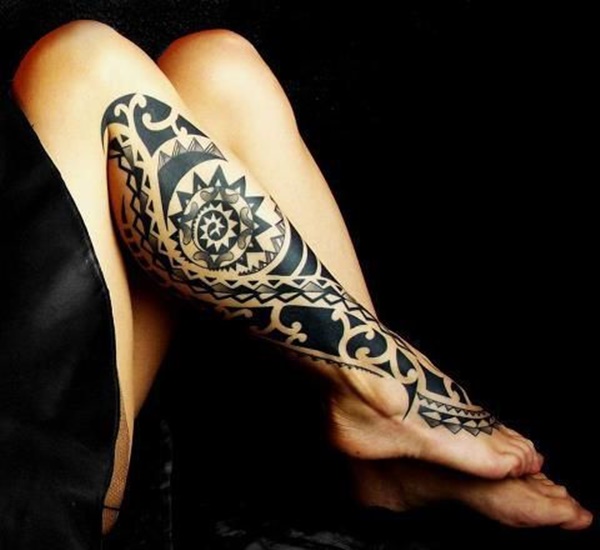
LINKS:
Serie Barford - has a link to the Book Council of New Zealand page, while she also notes here, 'My most recent collection, Entangled Islands (Anahera Press: due by December 2015) contains both poems and short stories that examine colonisation in the Pacific, as well as in Kanaky-New Caledonia, which has settlements of people who are descended from Polynesian settlers dotted around the islands...Entangled Islands details my birth near a Rongo stone, explores my mother's homesickeness, various disrupted narratives and family events, such as the death of a beloved aunty.'
Amber Esau - Amber sent links to her poems, rather than a preferred poem. Here is a further link. Enjoy her work!
Mariana Isara - link here to Mariana's National Library of New Zealand page.
Selina Tusitala Marsh - fascinating news report about the Literary Death Match recently held in London, won by a Pasifika poet! Here also is her Book Council page.
Courtney Sina Meredith - very informative, this site...
Leilani Tamu - link here to Leilani's rather comprehensive web site.
There is also a very valuable NZEPC site called the Pasifika Poetry Web, which contains all sorts of mighty Pasifika poetry and other writing.
Finally mention must also be made of two excellent recent collections of Pasifika writers - Whetu Moana (2003) and Mauri Ola (2010) edited by Albert Wendt, Robert Sullivan and Reina Whaitiri.
Autobiographical background - briefly, as original poetry editor of the Maori and Indigenous Review Journal, several of the Kiwi-Pasifika lady poets had contributed fine poems back then, so I always had it in mind to write more about them. I grew up in Mangere-Papatoetoe and had worked with both Bernard Gadd and Tim Pickford, who made some concerted effort back last century to publish Pasifika writers and poets, brave efforts then, when Pickford, Sefulu Ioane and Norman Simm's The New Cave Quarterly hit the streets, and Gadd's Pacific Voices was a harbinger. That was back in the 1970s when I also went to live in the Pacific for the first time - in The Republic of Nauru, which I revisited in 2010, after also living in Philippines (where we have a home) and visiting Fiji, Guam, Northern Marianas, Palau, Vanuatu, Hawaii and the Solomon Islands.
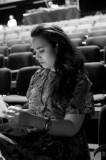
Ngā whakaaro